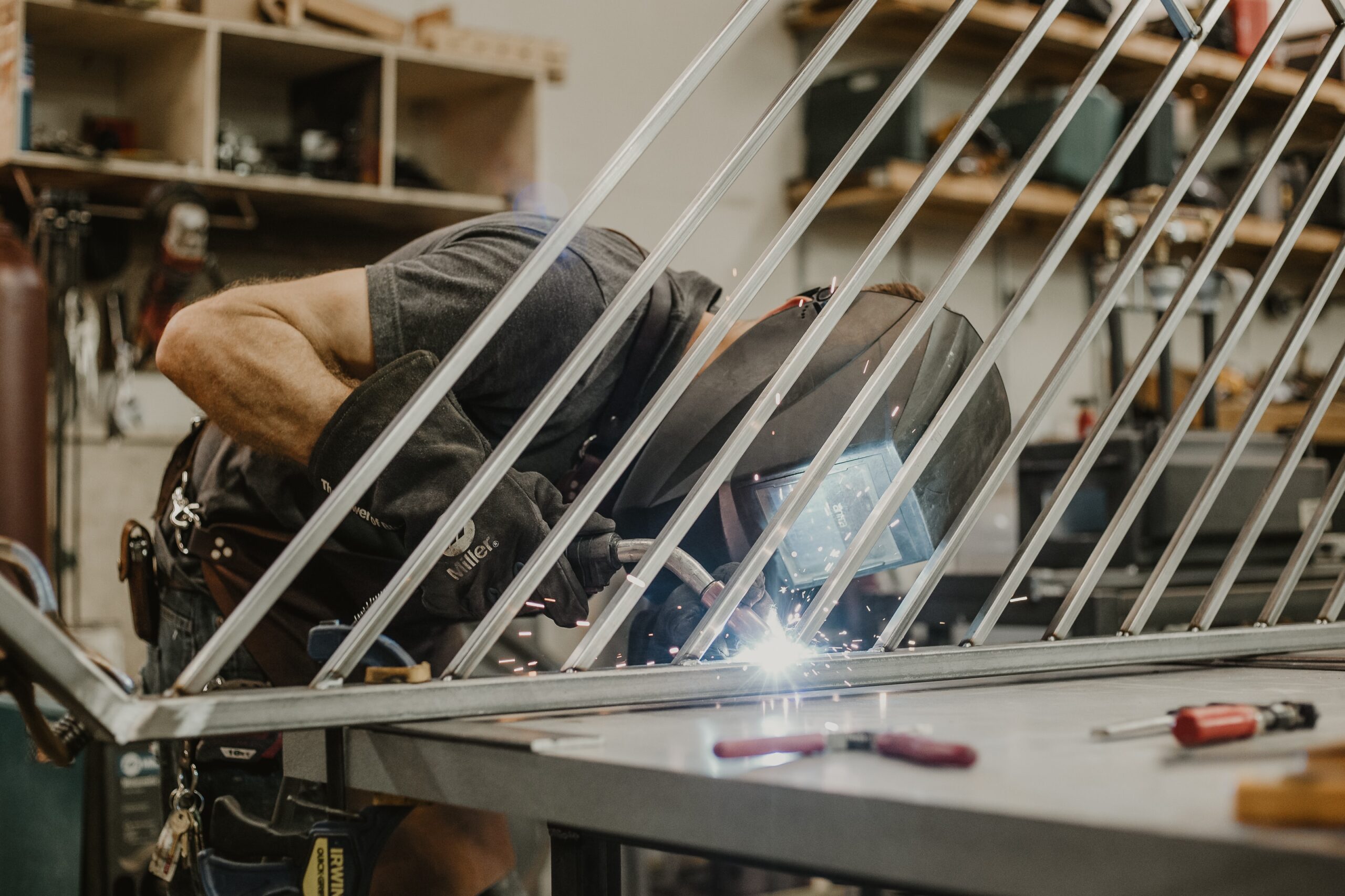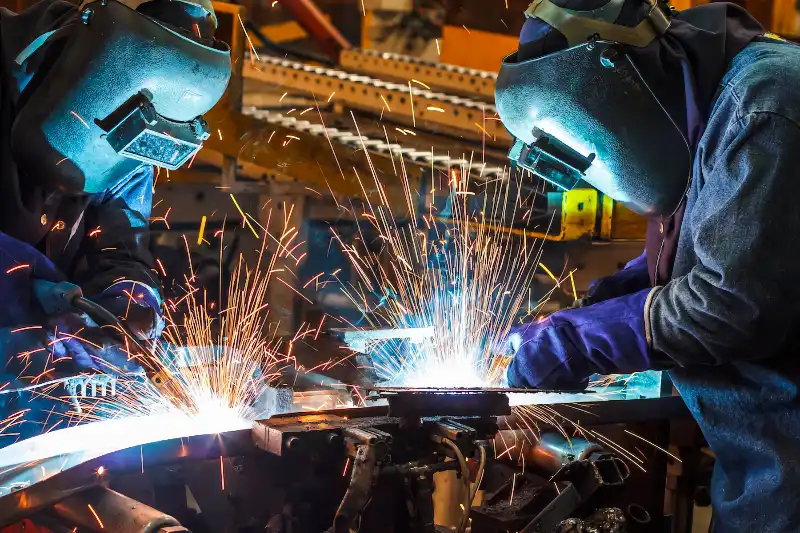Usual Welding Fixing Issues and How to Address Them Successfully
Welding repairs commonly run into a series of concerns that can endanger the integrity of the end product. Typical issues consist of poor infiltration, porosity, and imbalance, to name a few. Each problem provides one-of-a-kind obstacles that call for certain methods for resolution. Understanding these concerns is vital for welders aiming to improve their abilities and results. This conversation will certainly discover these typical welding repair problems and reliable techniques to resolve them.
Insufficient Infiltration
Inadequate infiltration happens when the weld metal falls short to fully fuse with the base material, causing weak joints and potential structural failures. This problem commonly comes from insufficient warm input, inaccurate electrode angle, or inappropriate welding speed. Welders may experience poor infiltration because of a miscalculation of the essential parameters for a specific product thickness or kind. Additionally, contamination on the base material's surface can prevent efficient bonding, worsening the problem. To attend to inadequate infiltration, welders ought to ensure proper setups on their equipment and maintain a clean work surface area. Normal assessment of welds is advised to determine any type of deficiencies early, enabling prompt corrections and the avoidance of compromised structural stability in welded assemblies.
Porosity
Porosity is a common defect in welded joints that materializes as little gas bubbles entraped within the weld steel. This defect can compromise the stability of the weld, bring about reduced stamina and prospective failure under anxiety. Montana Mobile Welding and Repair Belgrade. Porosity typically occurs from contamination, dampness, or incorrect welding methods, which enable gases to leave into the liquified weld swimming pool. To resolve porosity, welders should assure appropriate surface preparation, preserve a tidy workplace, and use suitable welding specifications. Additionally, picking the appropriate filler product and protecting gas can mitigate gas entrapment. Normal inspection and testing of welds can aid recognize porosity early, assuring prompt restorative actions are taken, thereby maintaining the quality and dependability of the welded structure
Misalignment
Imbalance in welding can occur from various elements, including inappropriate setup and thermal growth. Understanding the root causes is necessary for efficient resolution. A number of modification methods are offered to straighten components and assure structural integrity.
Reasons for Imbalance
Welding misalignment frequently stems from a variety of underlying problems that can compromise architectural integrity. One main cause is inappropriate fit-up of elements prior to welding, which can lead to gaps and uneven surface areas. Variations in thermal growth throughout the welding procedure can likewise cause distortion, particularly if the products being signed up with have different coefficients of growth. In addition, poor fixturing and clamping might fail to hold elements safely in position, leading to motion throughout welding. Poorly maintained devices, including welding makers and devices, might present disparities in the weld grain, further contributing to misalignment. Finally, driver mistake, coming from not enough training or experience, can also play a considerable duty in creating misaligned welds.
Improvement Strategies Available
Attending to imbalance efficiently requires a combination of rehabilitative methods tailored to the details issues available. One typical technique is using fixtures or jigs to hold parts in the appropriate placement throughout welding, making certain consistent alignment. In addition, preheating the products can help in reducing distortion and improve fit-up. For substantial misalignment, mechanical adjustment techniques, such as making use of hydraulic jacks or clamps, can be utilized to correct the placement before welding. Post-weld heat therapy may additionally be essential to relieve tensions brought on by misalignment. Careful examination and adjustment during the arrangement stage can prevent misalignment problems from coming to be considerable issues, advertising a smoother welding procedure and boosting total architectural integrity.
Distortion
Distortion is a typical obstacle in welding that can emerge from various elements, including irregular cooling and heating. Understanding the sources of distortion is important for applying efficient prevention techniques. Resolving this concern not just boosts architectural stability but additionally enhances the total top quality of the weld.
Reasons of Distortion
When based on the extreme warm of welding, materials often go through modifications that can result in distortion. This phenomenon mainly arises from thermal expansion and contraction throughout the welding process. As the weld area warms up, the material increases; upon cooling, it gets, which can produce interior tensions. Furthermore, irregular home heating across a work surface can worsen these anxieties, resulting in bending or flexing. The kind of material additionally plays a considerable role; steels with varying thermal conductivity and coefficients of growth might react in different ways, resulting in unpredictable distortions. In addition, inadequate joint e7018 style and insufficient fixturing can contribute to misalignment during welding, enhancing the possibility of distortion. Comprehending these reasons is necessary for reliable welding repair work and avoidance approaches.
Avoidance Techniques
Effective prevention strategies for distortion during welding concentrate on regulating warmth input and guaranteeing proper joint design. Keeping a consistent warm input assists to lessen thermal development and tightening, which can cause distortion. Utilizing methods such as preheating the work surface can also minimize the temperature gradient, advertising uniform heating. In addition, selecting proper joint layouts, such as T-joints or lap joints, can enhance stability and minimize stress focus. Applying correct fixturing to secure the workpieces in place even more aids in keeping positioning throughout the welding procedure. Staggered welding sequences can disperse warm much more evenly, preventing local distortion. By applying these strategies, welders can greatly lower the probability of distortion and improve the general high quality of their welds.
Cracking
Fracturing is a typical problem encountered in welding fixings, frequently resulting from numerous aspects such as incorrect air conditioning prices, material choice, or insufficient joint preparation. The incident of cracks can significantly endanger the integrity of the weld, leading to prospective failings during operation. To resolve this problem, welders have to initially analyze the source, making sure that products work and appropriately chosen for the details application. In addition, regulating the air conditioning rate during the welding procedure is vital; fast air conditioning can induce stress and bring about fracturing. Appropriate joint style and preparation also contribute to minimizing the danger. Executing these methods can boost weld quality and longevity, inevitably decreasing the likelihood of breaking in completed weldments.

Insufficient Blend
A considerable concern in welding repair work is insufficient combination, which takes place when the weld metal does not properly bond with the base material or previous weld passes - Montana Mobile Welding and Repair Fabrication. This issue can lead to weak points in the joint, potentially jeopardizing the integrity of the bonded structure. Aspects adding to insufficient combination include insufficient warmth input, incorrect welding technique, and contamination of the surfaces being joined. To resolve this concern successfully, welders ought to ensure proper pre-weld cleaning and surface prep work, as well as adjust their welding parameters to achieve sufficient penetration and combination. Routine assessment throughout the welding process can also aid identify incomplete blend early, permitting prompt rehabilitative measures to boost the overall top quality of the weld
Overheating
While welding repair services can boost architectural honesty, overheating provides a click for more info substantial obstacle that can bring about material deterioration. Too much warmth during welding can change the mechanical residential properties of steels, resulting in reduced toughness, boosted brittleness, and warping. This phenomenon is particularly critical in high-stress applications where structural integrity is vital. Determining overheating can include mig mag welding visual assessments for discoloration or distortion, as well as keeping track of temperature level throughout the welding process. To reduce the dangers associated with getting too hot, welders ought to use appropriate techniques, such as regulating warm input, readjusting traveling rate, and utilizing appropriate filler materials. Furthermore, applying pre- and post-weld warm treatments can help restore product buildings and improve the overall quality of the fixing, ensuring long-term efficiency and safety and security.
Often Asked Concerns
What Are the Usual Signs of a Welding Issue?

Exactly How Can I Test My Welds for Quality?
To test welds for quality, one can make use of aesthetic inspections, ultrasonic testing, and radiographic approaches. Each strategy ensures architectural integrity, determines issues, and confirms adherence to defined criteria, eventually enhancing the dependability of the welded joints.
What Safety and security Safety Measures Should I Take While Welding?
When welding, one must focus on safety by putting on suitable personal protective tools, guaranteeing appropriate air flow, securing combustible materials away, maintaining a tidy office, and recognizing surroundings to avoid injuries and crashes.
Can I Fix a Weld Without Remodeling the Entire Joint?
Fixing a weld without redoing the whole joint is possible, relying on the damage (Montana Mobile Welding and Repair). Techniques such as grinding, adding filler material, or utilizing a welding procedure can efficiently attend to certain imperfections while preserving the bordering framework
What Tools Are Essential for Reliable Welding Repairs?
Vital tools for reliable welding fixings include a welding equipment, cable brush, mill, safety gear, clamps, and filler materials. Each tool plays an essential duty in making sure quality and security during the fixing procedure. Porosity generally develops from contamination, dampness, or incorrect welding strategies, which allow gases to get away right into the liquified weld pool. Improperly kept tools, consisting of welding devices and devices, may introduce variances in the weld bead, further contributing to misalignment. When subjected to the intense warmth of welding, products typically undergo changes that can lead to distortion. Splitting is a common concern experienced in welding fixings, often resulting from different factors such as inappropriate air conditioning rates, product option, or poor joint prep work. A significant issue in welding repairs is insufficient blend, which occurs when the weld metal does not appropriately bond with the base product or previous weld passes.
Comments on “Quick tips for poor fusion from Montana Mobile Welding and Repair”